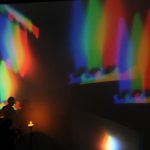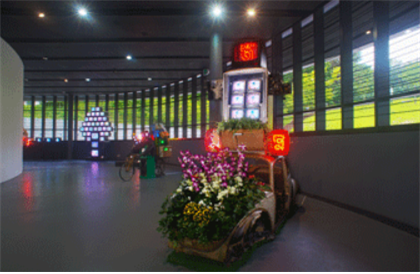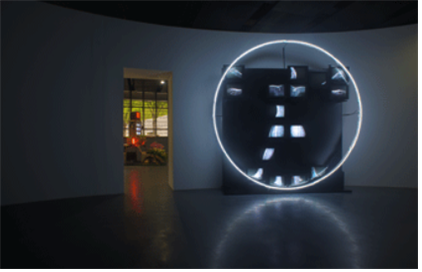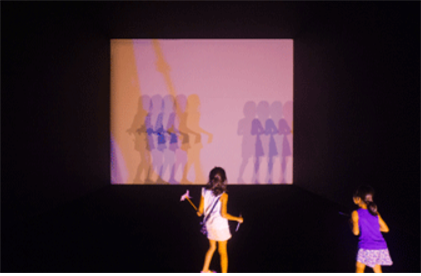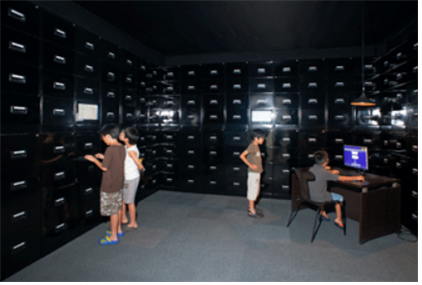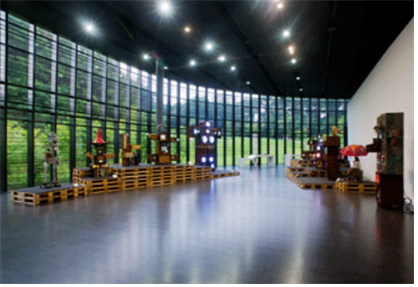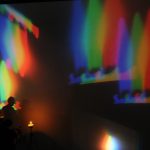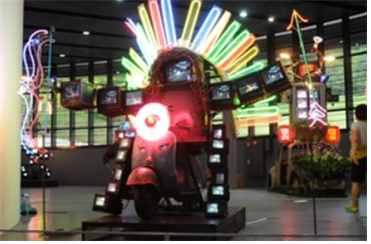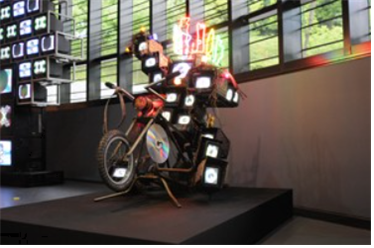Nam June Paik Art Center is pleased to present a special exhibition . In celebration of the 80th anniversary of the birth of Nam June Paik who led an exceptional life exploiting “boundary regions between and across various existing sciences,” this exhibition shies away from a conventional retrospective and instead sheds new light on Paik, the artist and thinker, with a thematic focus on cybernetics.
Theory of systems and information in a narrow sense, and philosophy of life and knowledge connecting man, machine and nature in a wider sense, cybernetics was a great source of inspiration for Paik who created a body of enthralling work by merging art and technology and rendered it in his vision and insight for the future.
“Nostalgia is An Extended Feedback” is borrowed from the phrase that Paik himself used as a title for his essay written in 1992 and also for one of his artworks, which, alluding to the key concept of cybernetics, i.e., feedback, is intended to emphasize the importance of looking back upon the past. This exhibition aims to enable the nostalgia for Paik felt today amplify the feedback from yesterday so that it will give rise to feedforward for tomorrow.
Replete with nostalgia for Paik, this exhibition offers a selective overview of his cybernetic constellation. TV Garden, the iconic piece of the Nam June Paik Art Center, will be combined with One Candle, to become an arena of exploring his networked ecological thinking. Marco Polo, The Rehabilitation of Genghis Kan, and many more historical and contemporary figures in the form of Paik’s robot sculptures will be theatrically staged. What will also be highlighted are the cybernetic issues of spatio-temporal multiplication, noise-information dynamics, and man-machine interactivity, in such works as Swiss Clock, Zen for Film, Paik-Abe Video Synthesizer, Three Camera Participation, and some of the arresting videos and films that Paik produced. In addition, a separate section will offer a rare chance to discover Paik’s drawings, documents and photographs through archival displays and tablet computers.
“Cybernated art is very important, but art for cybernated life is more important, and the latter need not be cybernated.” This is from the often quoted of Paik’s short manifesto. The ways Paik’s work resonates with a world of cyborg and cyberspace are brought into bold relief by the works of present-day media artists. Among others are Mary Bauermeister’s Secret Signs, Lutz Dammbeck’s The Net: The Unabomber, LSD and the Internet, Olafur Eliasson’s Your Uncertain Shadow, Catherine Ikam and Louis Fléri’s Fragments of an Archetype, Antoni Muntadas’s The File Room, and Bill Viola’s Ancient of Days. These artists are joined by Peter Campus, Valie Export, Dan Graham, Shinil Kim, and Lee Bul, whose work will all enrich the exhibition in terms of raising a question as to changing perceptions of realities in the technology-driven culture.
Paik’s statement about cybernated art and life ends with “We are in open circuits.” Nam June Paik Art Center this year takes upon itself the task of ‘open circuits,’ into which different voices can be fed and diverse feedbacks can be generated.





